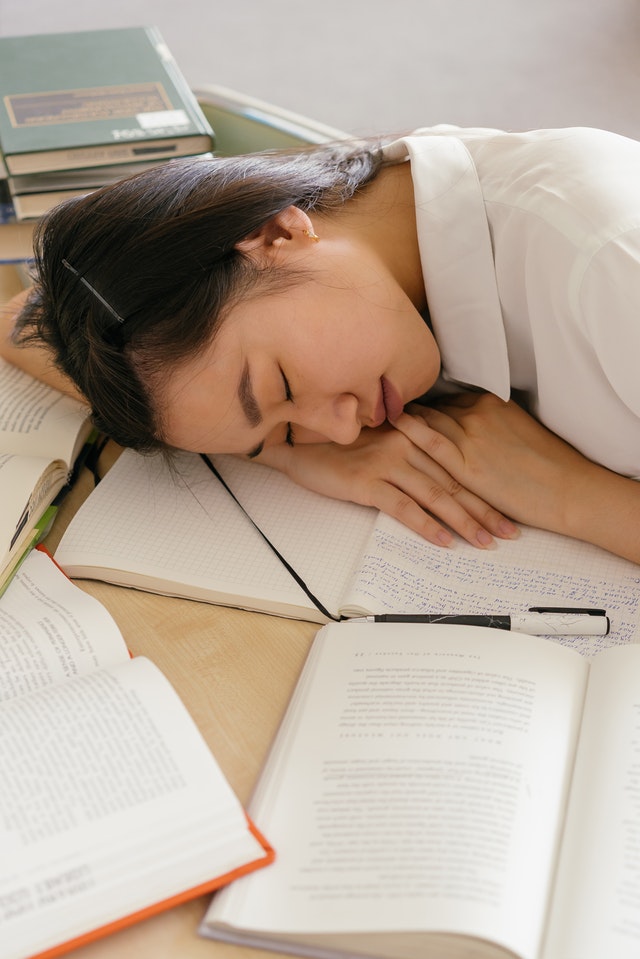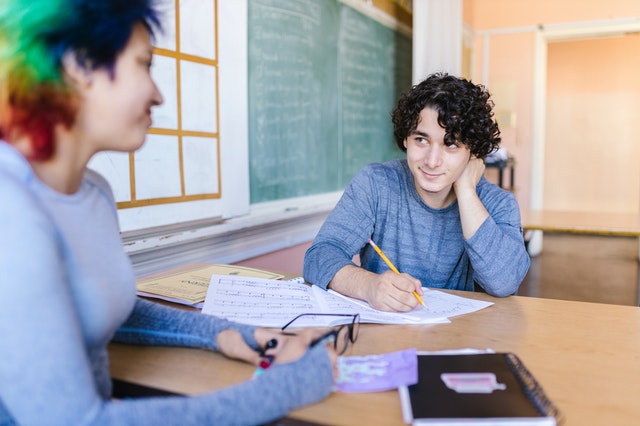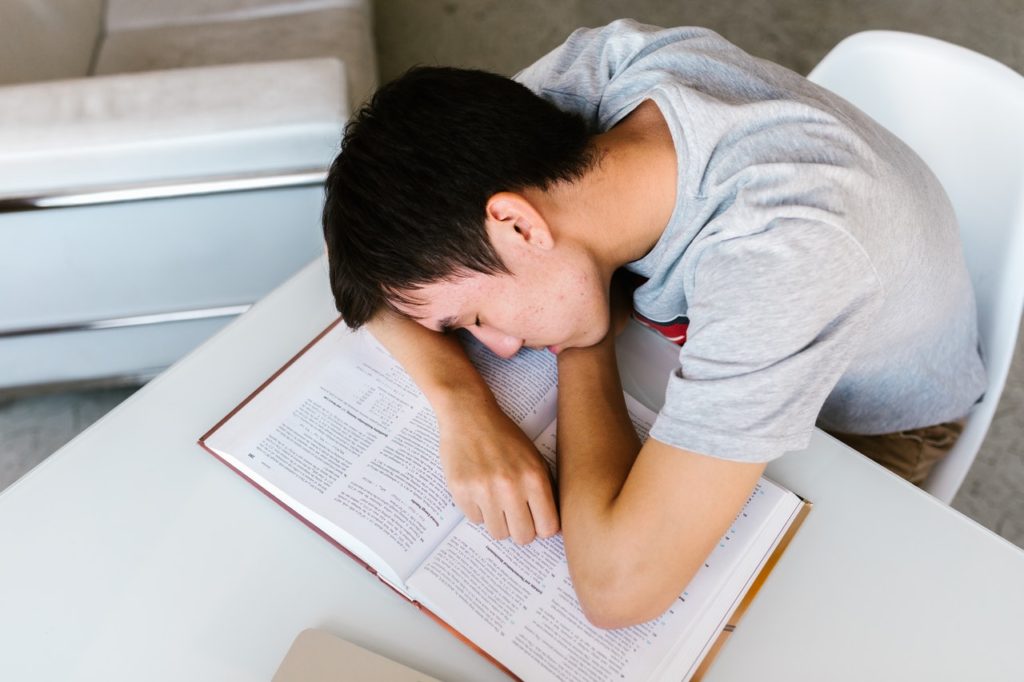When a student falls asleep in school, teachers generally think one of two things. Either the student is lazy or there is some trouble getting enough sleep at home. While this assessment is probably true generally the response is to wake the child up with a scolding and encourage them to go to bed earlier. Surprisingly though, recent research suggests that sleeping in school might not be the worst thing and could even improve creative problem solving skills in students.
While it may be true that students need to work to get to bed earlier by avoiding screen time before bed and work through drowsiness to pay attention, it has been well established in research that school starts far too early for the adolescent brain’s natural rhythm and the only reason school starts so early is so that parents can get to work. (Hale, and Troxel)
There may be no way to pressure society to change school hours to be later due to parental pressure, but new research hints at ways schools could alleviate student sleep deprivation and even use sleep to boost creativity by having students sleeping in school.
New Research on Sleep and Creative Problem Solving

Researchers out of the Sleep Disorders Department of the Pitié-Salpêtrière Hospital in Paris were intrigued by reports from famous painters and inventors such as Salvador Dali and Thomas Edison that the period when they were falling asleep caused them to have Eureka moments and creative insights.
They said that they would hold objects in their hands and as they were falling asleep the objects would make noises that would stimulate their brains and give them new ideas as well as waking them back up.
In order to test this effect in a more scientific manner the researchers started off by having participants in their study work on a set of math problems. The math problems were fairly simple, and just required tedious step by step processes to eventually arrive at the answer.
However, there was a secret shortcut that, when discovered, allowed the participants to quickly bypass most steps and solve the problems very quickly. The 16% of participants who discovered the shortcut in this first phase were disqualified from the study, but the remaining participants were put into a dark room where they could doze off. To simulate holding the object and prevent the participants from falling into deeper sleep, they were told to hold an empty bottle that they would drop when falling asleep, causing them to wake up again.
To see what was going on inside the brains of the participants, they were hooked up to sensors that monitored their sleep status to see the effects of N1 stage sleep (dozing off) and N2 sleep (deeper second stage sleep). Afterwards, they were told to go back to the math problems and continue their work.
The surprising finding from the study is that 83% of the remaining participants who went into N1 phase sleep uncovered the shortcut while only 31% of people who remained awake discovered the shortcut. Even more interesting is that participants who went into the deeper N2 phase of sleep had the hardest time with only 14% of them being able to uncover the secret shortcut.
How to Handle Students Sleeping in School?
Teachers might not always be able to allow students to be sleeping in school whenever they are tired, but this study hints that long periods of deep sleep might not be required to benefit from short periods of rest. Sleep deprivation has long been known to have significant effects on performance on memory and processing speed tasks.
An earlier study conducted on “achievement-oriented” teens had them come into the sleep lab and deprived them of sleep down to only five hours a night. (Lim et al.) The teens’ processing speed was significantly affected by the sleep deprivation, but the researchers utilized two types of rest to see how they recovered the lost processing speed. Some of the teens were allowed to take a one hour nap to see how this worked to recover their speed.
Unsurprisingly, teens who were allowed to take a one hour nap saw improvements in their processing speed, but this finding isn’t terribly useful to most schools who can’t really waste a whole hour of instructional time letting kids nap. More interestingly, however, they found that the students who were more sleep deprived and not allowed to nap benefited more from short 20-30 minute rest breaks than those who weren’t as deprived even when they didn’t sleep during their break.
So while teachers might not be able to give an entire hour for students to be sleeping in school, they might be able to let students take a quick nap break from their tasks to recover and be able to do their work more efficiently afterwards due to sleep improving creative problem solving skills.
There has even been some discussion on whether teachers should wake up students who are sleeping in their class. While incredibly disrespectful and hurtful to the teacher, when focusing on the student, some teachers have suggested it might be better to just let them sleep as they won’t be able to learn in such a groggy and less alert state.
Additionally, people who are woken up tend to react negatively rather than gratefully and so young teen minds may not be mature enough to appreciate the teachers desire for them to focus on learning and spend the rest of the lecture thinking the teacher is annoying.
While generally, it is still probably best for students to learn that they need to respect the teacher and stay awake during lessons, in some situations there might be better ways to deal with the situation in the long term. Rather than getting upset when a student is sleeping in school, perhaps try letting them sleep, as it is their education they are wasting.
Then after the lesson, the teacher can pull them aside and try using a more concerned approach asking questions like “Hi Susie, I noticed you fell asleep during class, are you ok? Not feeling sick? Is everything ok at home? I just felt bad and wanted to make sure there wasn’t something more serious going on.”
This approach will probably surprise the student, especially if they are having problems at home or are actually sick. One days lesson isn’t really worth affecting a relationship with a troubled student, and in the rare cases where a student doesn’t really have much care and support at home, this approach might really hit home and show them the teacher cares for them and change their whole outlook on the teacher and class.

Want more like this? Make Lab to Class a part of your weekly professional development schedule by subscribing to updates below.
References
Hale, Lauren, and Wendy Troxel. “Embracing The School Start Later Movement: Adolescent Sleep Deprivation As A Public Health And Social Justice Problem”. American Journal Of Public Health, vol 108, no. 5, 2018, pp. 599-600. American Public Health Association, https://doi.org/10.2105/ajph.2018.304381.
Lim, Julian et al. “Assessing The Benefits Of Napping And Short Rest Breaks On Processing Speed In Sleep-Restricted Adolescents”. Journal Of Sleep Research, vol 26, no. 2, 2017, pp. 219-226. Wiley, https://doi.org/10.1111/jsr.12497.



